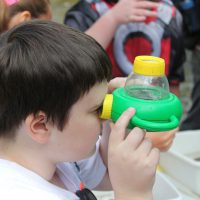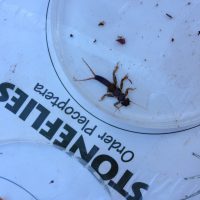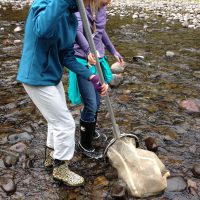Wearing gloves and goggles, young scientists crowd around a beaker of water they’ve just collected from a stream. They gauge temperature and test for water quality. But it’s more than just a field trip—the data they’re collecting is real.
Back in the classroom, students graph the results online at streamwebs.org, where they can not only monitor the health of their river but also view data from students around the state, who are monitoring their backyard streams, too.
For students in Benton and southern Linn counties, these creekside laboratories are made possible each fall by the Calapooia Watershed Council. The Council leads the Linn Benton Salmon Watch, a local partnership that allows youth to monitor their own watershed. They test water and even wade in the stream to catch and count bugs. If they’re lucky, they’ll catch a glimpse of a salmon in South Santiam or Alsea Rivers.
“It’s so hard for teachers to get their kids out on field trips. If something is all planned for them, it’s great to be able to offer that,” says Bessie Joyce, Executive Director of the Calapooia Watershed Council. “And hopefully the salmon show up on schedule.”
During fall 2016, the Council will conduct an impressive 36 field trip days for 24 elementary, middle and high schools, utilizing about 100 volunteers. With support from the Gray Family Foundation, the Calapooia Watershed Council holds trainings for these volunteers—from OSU students to retirees—to help shoulder the program as it grows.
“It’s fun to give volunteers the tools to teach each station, and then to interact with the kids and see the kids’ excitement,” Joyce says.
Once young students get their feet wet—literally—caring for their home streams, they may eventually join one of the Calapooia’s Youth Watershed Councils that are springing up at area high schools, or even participate in one of the Council’s many other programs, which range from invasive weed removal to stream restoration, dam removal and native plantings.



